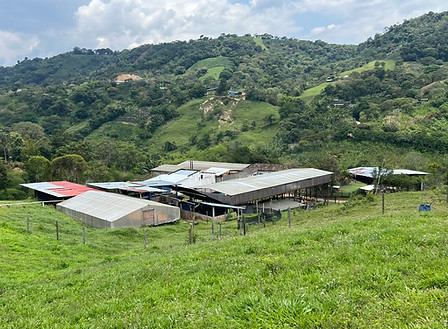A story about determination, experimentation and innovation
I moved to Australia in 2008 after my family had fallen upon hard financial times. They had all but replaced coffee for sugarcane as it was no longer financially viable to be exclusively coffee farmers. In Sydney I studied English by day and cleaned office buildings at night; covering my living and school expenses and sending the rest home to help my family.
One morning before English class I walked into a beautiful little coffee shop and ordered a flat white. In Colombia I could have purchased more than a kilo of green beans for the price I paid for that single cup of coffee. But it wasn’t just any cup of coffee, it was specialty coffee from Colombian and the line up for it was out the door.
By 2009 my brother Diego and cousins Edisson and Juancho were all living in Australia working for the same cleaning company working tirelessly to purchase the farm from our Grandfather. Meanwhile in Colombia, my sister Normal, her husband Gabriel and my parents were preparing the land and germinating thousands of coffee trees for what became our new specialty coffee plantation at La Palma.


Our foundation was incredible. We grew up with grandparents bestowing their coffee farming knowledge and wisdom upon us. We experienced the third wave outside of Colombia tasting specialty coffees from all over the world prepared in weird and wonderful ways. And what's more, we had the opportunity to learn from specialty coffee roasters - industry masters who became our mentors and friends.
With all the excitement in the world we began combining the art and science of coffee production; measuring absolutely everything that impacts the taste and quality of our coffee beans. We invested in refractometers, moisture meters, soil probes and pH analyzers, thermometers, hygrometers, a pluviometer - all the meters.


Every year our team conducts thousands of hours in experimentation and innovation research into the factors that improve our cup quality. Today we offer coffees prepared through aerobic, anaerobic, cold soak, double fermentation, infusions and traditional fermentation processes.
Discover our Before and After Timeline
Since the start of our project we have made significant investments into new equipment and infrastructure to make sourcing, fermenting, washing, drying and storing coffee more efficient and sustainable. For example, today our Ecomill uses a fraction of the water it once took to wash a kilo of coffee (0.5L vs 5L). We have also invented a system that converts coffee bi-products like cascara and mucilage into organic fertilizers that go back into the plantation making it more rich and fertile.
Before and After
Finca


Tank Receiver


Pulping Machine


Wet Mill


Ecomill


Drying Tables


Warehouse










